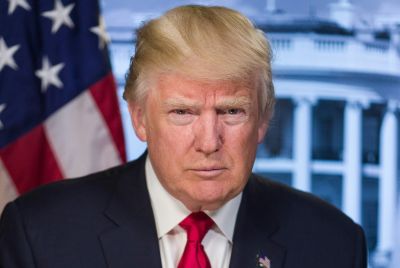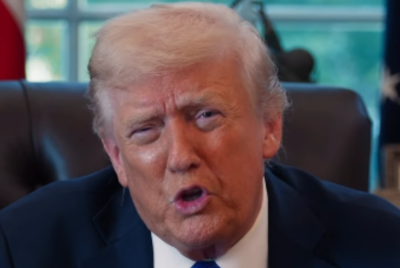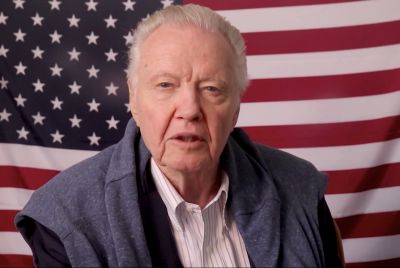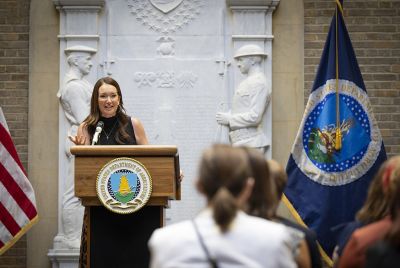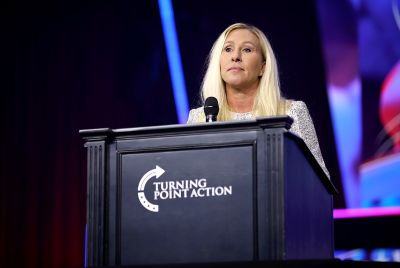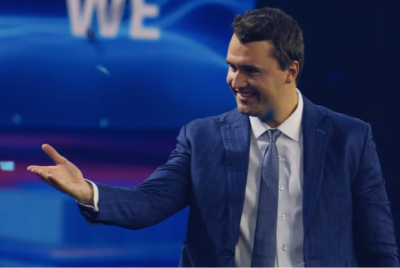Democrats Terrified? Trump's Dividend Cheque Likely Before 2026 Vote
Trump says £1,600-per-person 'tariff dividend' payments could arrive by mid-2026, but experts warn the plan faces legal, legislative and fiscal hurdles.

The political stakes surrounding Donald Trump's revived plan to send Americans a $2,000 'tariff dividend' cheque have intensified, with the US president signalling the payments may arrive by mid-2026.
The timing is setting off alarms among Democratic strategists, who fear a direct cash payout months before the next congressional elections could shift voter sentiment in battleground states.
Trump insists the scheme will be funded entirely through tariff revenues—describing it as relief for working families and a way to cut national debt—but economists and legal experts warn the maths and legality remain unproven.
Trump Says Cheques Could Arrive by Mid-2026
Speaking to reporters in the Oval Office, Trump said that 'somewhere prior to ... probably the middle of next year, a little bit later than that ... we're going to be issuing dividends' to 'individuals of moderate income, middle income,' according to Axios.
He described the plan as both financial relief for working families and a mechanism to reduce national debt, saying tariff revenues would be used to pay for the program, Fortune reported.
Trump further emphasised that the checks would be funded directly by his tariff schemes. The Economic Times reported that he reiterated this during his remarks.
On his Truth Social page, Trump wrote: 'A dividend of at least $2,000 a person (not including high-income people!) will be paid to everyone.'
Legislative and Financial Doubts
Treasury Secretary Scott Bessent cautioned that the scheme may not proceed without new legislation. He told Business Insider that 'we will see ... we need legislation for that,' signalling that Congress could significantly influence the timing and scope of the plan.
Budget analysts and tax specialists have expressed scepticism about the math behind the proposal.
Erica York of the Tax Foundation told The Washington Post that the plan 'misses the mark,' highlighting concerns that tariff revenues may fall short of what is needed for a nationwide payout.
The Post further reported that independent estimates project tariff collections could reach $200–$300 billion annually, while a $2,000 check for all eligible American adults could cost around $600 billion, depending on income thresholds.
FactCheck.org also warned that diverting all tariff revenue into public rebates 'could push debt to 127% of GDP by 2035 instead of 120% under current law."
Legal Uncertainty Remains
The Supreme Court is reviewing challenges to Trump's 'reciprocal' tariffs, with several justices expressing doubt about the administration's authority to impose them, according to The Washington Post.
Trump acknowledged this legal risk, saying that if the court strikes down the tariffs, 'then I'd have to do something else.'
Democratic Concerns Intensify
Democrats worry the dividend could become a potent tool for Trump and Republicans during the 2026 midterms. A direct payout to middle- and lower-income earners could boost turnout among key voting blocs that Democrats typically count on.
Reuters reported that both parties are already mapping out how Trump's tax and spending policies could influence voter behaviour.
Republican operatives believe the dividend would reinforce the impact of earlier tax cuts, while Democrats plan to stress possible reductions in Medicaid and food assistance.
Public Narrative at Stake
The plan also bolsters Trump's broader narrative, portraying tariff critics as 'fools' and asserting that tariffs produce 'trillions' in national revenue, comments documented by TIME.
By presenting the dividend as a benefit to 'ordinary Americans,' Trump seeks to frame trade policy as a populist rather than partisan issue, a shift Democrats fear may resonate with undecided voters.
Some Democratic-aligned budget analysts argue that the plan risks worsening long-term federal debt, currently above $38 trillion.
Business Insider reported that experts believe the proposal could create more fiscal strain than relief if not paired with significant spending cuts.
Impact on Households and Economy
For families dealing with inflation and high living costs, a $2,000 payment could provide meaningful help. However, analysts warn that the sudden influx of cash could fuel renewed inflationary pressures if households spend it rapidly, CNBC reports.
Fortune also noted that if Congress stalls, the payments could be reclassified as a tax rebate rather than a direct cash transfer.
© Copyright IBTimes 2025. All rights reserved.


